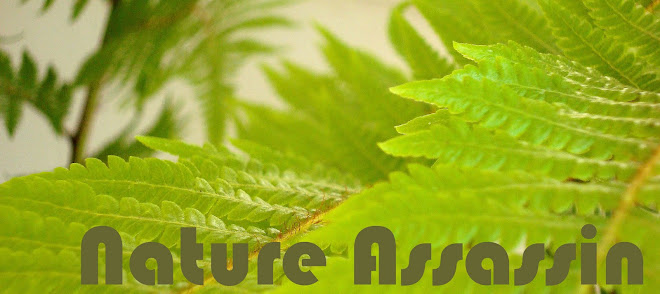Here's a scenario we can all relate to. You lay in bed at night unable to sleep. You toss and turn and rub your tired eyes, but still something haunts you. Thunder begins to roll and rain pelts the windows. Overcome, you stumble naked into the living room, groaning and pulling your hair. Operatic death metal emanates from the black, black night. Lightning momentarily illuminates your silhouette as you fall to your knees, and scream with arms outstretched:
"SO..... MUCH...... POTTING SOIL....."
Maybe you're repotting. Maybe the soil is old and expired. Maybe you left the bag open and the sterility is compromised. Well don't worry, I have a smartypants on duty.
Today's featured smartypants is Mr. Joe Simonis. He is an expert in many many fields, particularly biology and the outdoors. As undergrads, Joe and I spent wonderful hours discussing nature and fending off rogue sorority sisters with broken bottles. Nowadays, Joe roams the islands off the coast of Maine collecting creepy things in buckets for his PhD. That's the way I understand it, anyway. Several months ago I proposed to him the following problem:
NA: Here's a good question... I am repotting all of my plants this spring, around March. Most sources say I should just dump out the old potting soil in the backyard, but I can't help but wonder if that's really safe. There could be weird bacteria, left over fertilizer, pests... I did just have an outbreak of spider mites and mealy bugs. I'm not sure it's okay to just dump that stuff out. Can you recommend a safe way to dispose of old potting soil?
His response:
Joe: So, soil disposal--unless you have access to an autoclave, you're pretty much stuck with just dumping it outside as is. It shouldn't be too bad, since a lot of pests that take off in the indoors don't do as well outside (spider mites rarely get huge out breaks outside, for example). I think you should be ok just dumping it as is. The major concern really for dumping plants is putting out non-native plants, etc.. If you're concerned about that, I'm not sure what you should do, given that you don't have an autoclave... maybe Chicago has a place to dump stuff?
So, looks like it's mostly okay to dispose of your old/leftover potting soil in your yard or dumpster, with the following stipulations:
- In the Midwest, the safest leftover soil to dump outside likely comes from your tender tropicals. Even if seeds or rootstock from your old plant were to survive and grow outside, the first hard frost would send those bastards to hell. Conversely, species that are considered hardy perennials in your zone should not be released into the wild. Case in point: while living in St. Louis, I found an outbreak of red spider mites on my variegated Hedix hedera. Assassin that I am, I opened the closest window in my top floor apartment, and threw it out. Weeks later while walking through my sideyard, I found that the ivy had survived the fall, overcome the spidermite, and taken root in the ground. Common ivy is actually an invasive species in North America, so I momentarily freaked out and self-flagellated (I was raised by hippies, what can I say). Finally I pulled it all up and sealed it in a trash-bag in the garage until it was completely dead.
- Dirt that comes off of plants with certain problems should never be released outside. Such problems include but are certainly not limited to anthracnose (canker), rust fungus, and eelworm parasites. Luckily these problems are pretty rare. Look it up if you're not sure, that's what the interwubble is for. The fantastic book The House Plant Expert by Dr. D.G. Hessayon (Expert Books, 2003) suggests that you burn any soil and plant material associated with these diseases. Check it out first: this may not be advisable or legal in your area. These problems are also generally not treatable with fungicides or pesticides, and furthermore such chemicals require special disposal themselves.
By the way, if you were curious, an
autoclave is basically an fancy stove where germs go to die, just like those little microwavey-things that salons use to sanitize manicure tools. Chicago does not offer autoclaves to the public, but the
Chicago Recycling Coalition does offer free disposal of hazardous household waste. Hooray!
























